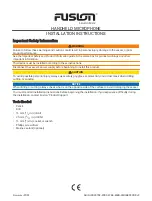
The Beecaster arrives fully assembled on a low-profile articulating stand and base, making it the perfect choice for today’s desktop
multimedia applications. With minimal distortion and variable sonic signatures, the Beecaster is an ideal microphone for recording a
wide variety of sources in multiple applications.
The two-piece articulating arm adjusts in three directions, allowing optimum capsule placement for any source. The arm extends up
to 12” (30 cm) and moves both vertically and horizontally. Additionally, the arm can rotate 45 degrees on the base; for fine tuning,
the capsule itself rotates.
Caution: the Beecaster capsule is designed to tilt on one axis only. Use caution when positioning the capsule
to avoid broken appendages!
The Control Center in the base includes 3 rotary knobs. On the left, a four-position rotary switch selects the Sonic Image (discussed
in detail later) that’s applied to the signal.
The center Gain control adjusts the amount of signal that reaches your recording software’s input. Adjust the Gain for proper level,
using your software’s level indicators (meters) while making sure the level does not reach the top of these indicators.
The headphone amplifier’s Volume Control is on the right. Plug your headphones into the standard 1/8” (3.5 mm) headphone jack on
the front of the base, and adjust the volume for a comfortable and safe listening level. Note that this controls playback volume only,
and not the mic’s output level. To silence the volume of the microphone during playback when monitoring through headphones, press
the Mute Button, it will illuminate. To activate the audio simply press again.
The Beecaster includes a custom pop filter designed to help eliminate sibilance and plosive sounds when used with vocals. Always
use the filter during vocal recording to protect the diaphragm from damage.
The LED power light on one side of the Beecaster indicates the
mic’s front (active) side. Align the microphone and stand so the
active side faces the sound source. The Beecaster’s selectable
pickup patterns suppress sounds hitting the back of the mic,
and determine the strength of signals reaching the sides.
care
&
feeding
6
!
Beecaster custom pop filter






























